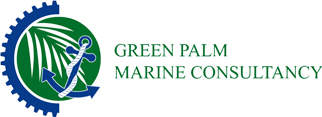GPMC and its partner Ultramarine Europe are pleased to announce the successful conclusion of the Naval Architectural scope work for the FEED studies of the Sao Vang and Dai Nguyet platforms, located off the shore of Vietnam, for Idemitsu Oil & Gas.
Sao Vang is a Central Processing Platform with a topside weight of approximately 13,700MT, while Dai Nguyet is a wellhead platform with a topside weight of approximately 18,00MT.
The Naval Architectural scope of work involved the following:
- Transportation analysis of Decks
- Transportation analysis of Jackets
- Launch analysis of Jackets
- Mating analysis of CPP deck
Platform design and structural checks were performed by Aker Engineering based in Kuala Lumpur. GPMC and Ultramarine performed the launch and deck mating analyses and provided G forces during transportations for structural checks.
MOSES software has been used for all analyses, and has proven to be the a perfect tool for analysing such operations.
The idea behind the development of MOSES (which started in the seventies) was to use the same tool to analyse all aspects of an operation (stability, hydrodynamic, motion and structural), considering all structures in the same model.
The advantages of such an approach become apparent when performing deck mating analysis.
The mating analysis is predominantly an impact problem where the deck supported by the vessel hit the jacket by means of ‘connectors’ named LMUs.
In such a problem, the inertia of the system varies at each time/step during the transfer of load from float-over barge to Jacket and affects the behavior of the whole system.
The problem cannot be treated in the frequency domain due to the non-linearities attached to the system. Hence, time-domain simulation shall be used using enough long samples to catch all effects.
MOSES is not just a solver but a real language, and so all simulations can be treated in loops over configurations and environments.
Results are extracted and summarised automatically, thereby reducing time the required for analysis and making the system efficient.
Such an approach drastically reduces the time needed to obtain results sought by topside and LMU designers, for example loads.
Additionally, one can obtain instantaneous loads applied from diverse sources (fenders, LMUs, mooring lines, etc.) on a particular leg.
The other advantage is the fact that everything being treated internally by the software without any external transfer of data, it cannot be error prone.
Applying such procedures to analyse the installation of the various structures, yielded to stay focused on a fast track and respond quickly to changes imposed by the design done by Aker Engineering.
Please contact Green Palm via the enquries form for more information.

